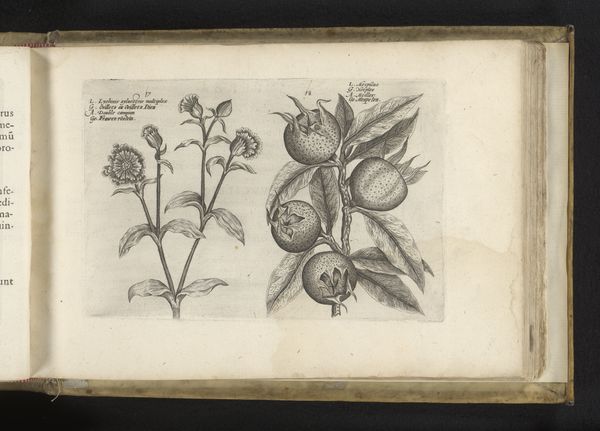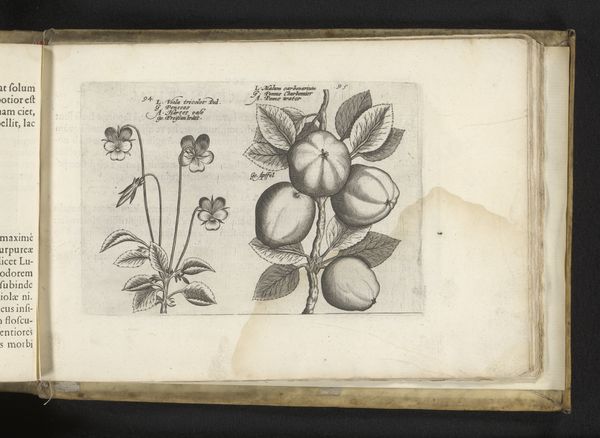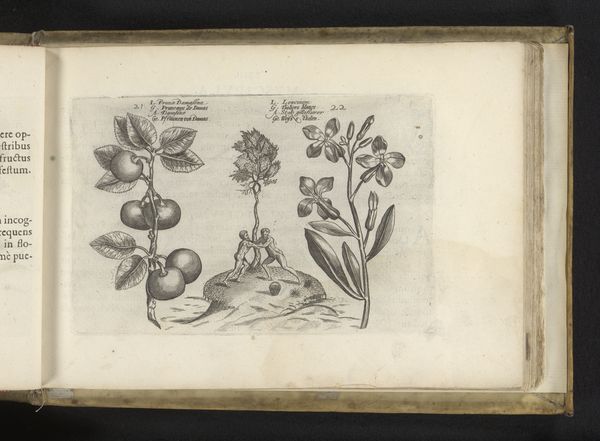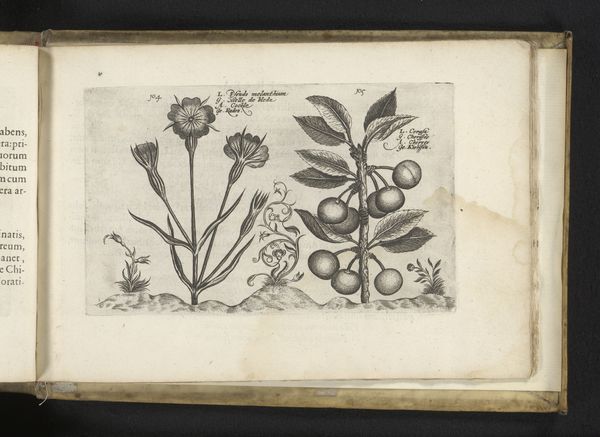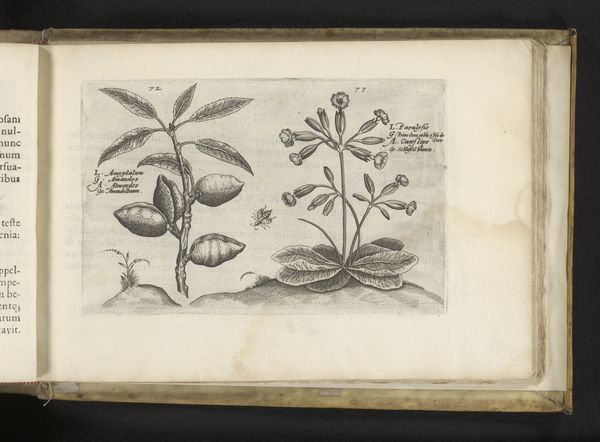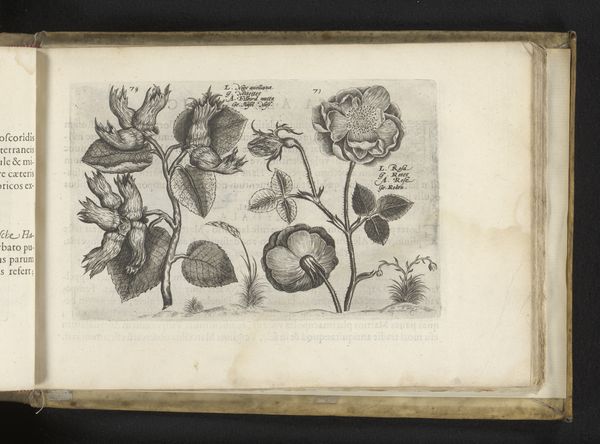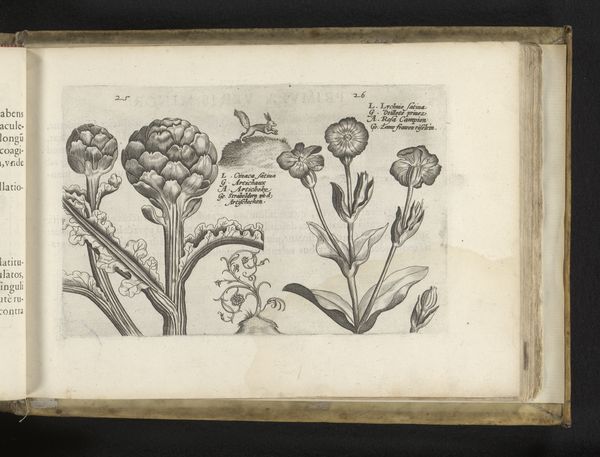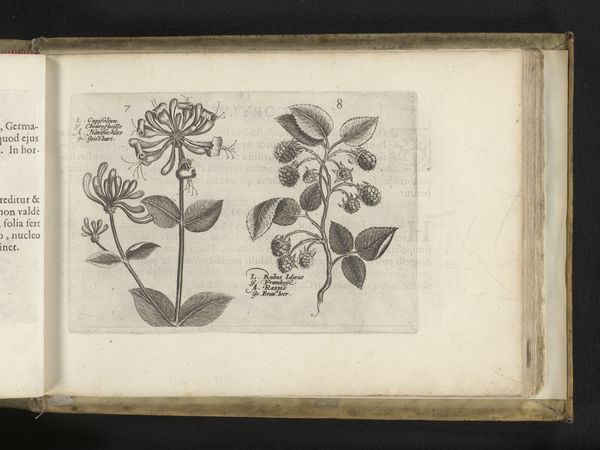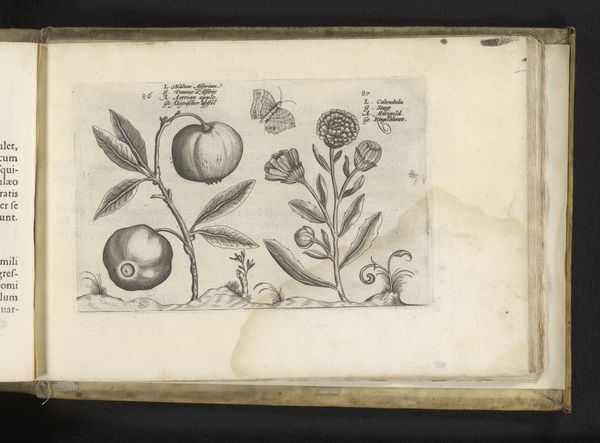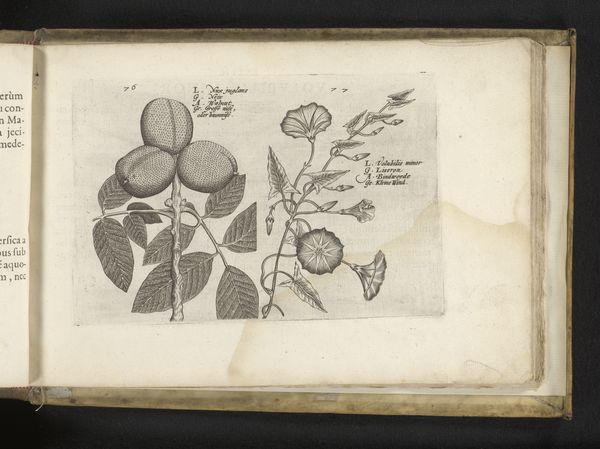
drawing, print, etching, paper, ink, pen
#
portrait
#
drawing
#
aged paper
#
toned paper
#
homemade paper
#
ink paper printed
# print
#
etching
#
sketch book
#
flower
#
figuration
#
paper
#
11_renaissance
#
personal sketchbook
#
ink
#
pen and pencil
#
line
#
sketchbook drawing
#
pen
#
storyboard and sketchbook work
#
northern-renaissance
#
academic-art
#
sketchbook art
Dimensions: height 132 mm, width 199 mm
Copyright: Rijks Museum: Open Domain
Curator: Look at this beautiful botanical illustration, "March Violet and Orange," dating back to 1617 by Crispijn van de Passe. It's housed here at the Rijksmuseum. The artist used etching with ink on paper. What strikes you first? Editor: The stark contrast – it's very minimal and subdued, the paper has a wonderfully aged look. It gives a feeling of something captured perfectly. Almost like seeing a quiet corner of an apothecary's garden. Curator: Definitely. I feel the illustration's positioning within the book form is also important. I wonder what was intended by having these images appear to grow on top of printed words? It creates a space where the literary, scientific, and natural intertwine. Editor: The juxtaposition definitely sparks ideas around how nature writing at the time played a vital role in shaping understanding of the natural world and the violet specifically. Violets carried so much symbolic weight at that time. The modesty, faithfulness, remembrance—these flowers often signaled much deeper messages. Curator: Right. And that orange on the other side—such a luxury item then. It hints at wealth and trade, the exotic becoming more accessible. But the rendering isn't about flawless representation, but something… studied. He focuses on the small details of the flower petals and then just alludes to the fruit shape. Editor: I think the style reflects something that is quite inherently gendered. Botanical drawings such as this became avenues through which many elite women of the era developed as artists. Looking back now, there is such potential here to read the making of prints such as these as part of women's ongoing work towards greater self expression. Curator: Absolutely, that makes so much sense in this context. What starts out looking like something purely representational, like a factual plate for a botanist's guide, unfolds to be deeply layered, connected to personal lives and broader cultural currents. Editor: Precisely! And for me, reflecting on the artist, Crispijn van de Passe, prompts me to ask what this era looked like for women within the artist's circle, and within the artworld more generally. Curator: I'm so glad you touched upon that; food for thought. This seemingly simple rendering has shown us the value in quiet examination and intersectional thinking. Editor: Indeed. This book becomes an interesting source of thinking about Renaissance-era culture as bound to matters of gender and power.
Comments
No comments
Be the first to comment and join the conversation on the ultimate creative platform.
